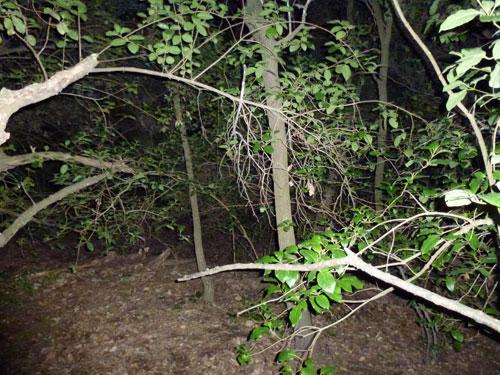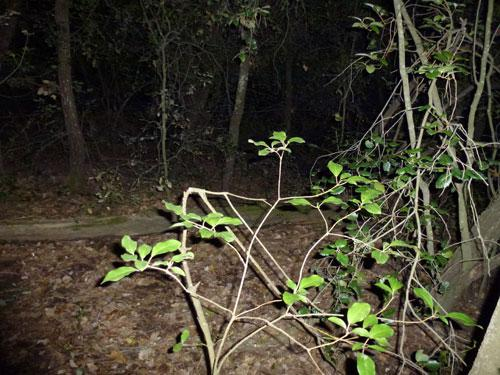Intravia
Gerard Ortín (Barcelona, 1988) has a degree in Fine Art from the University of Barcelona and studied Modern Music and Jazz at the Liceu Conservatory. He has received a grant for artistic creation from the Guasch Coranty Foundation and has been artist in residence at NauEstruch. In 2012, he presented “Cortex”, a joint exhibition with the artist Marc Larré at the Estrany – De la Mota gallery. He works with the group Sons de Barcelona (Phonos, MTG and UPF) and on the Voz Mal project with Jaume Ferrete. He combines his artistic and musical training to experiment using different audiovisual, sound and performance techniques. His personal research focuses on exploring the immediate environment of his garden, understood as an interstitial space between the home and the woods. This scene sets the pattern in a process that revolves around the idea of nature as mental space. F
or nearly four years, Gerard Ortín worked on a subjective portrait of the garden at his home, which adjoins the Collserola woods, based on photographs, slideshows, video art, video actions, performances and installations. An arts grant from the Sala d’Art Jove enabled him to establish his first Ruta (Route, 2011), a daytime journey through the woods outside his garden. Ortín intervened this new “non-controlled” space using a variety of artistic and cultural materials, sharing his vision of nature as mental and physical space through a collective itinerary. This “management” of experience led him to rethink and adapt his work strategies, opening up new ways of exploring the process.
Organised into six sessions for fifteen people, registered in advance, the Intravía project embodied a new challenge for both the artist and group: a night-time route around Collserola woods in which the participants are also protagonists of the work. An unknown natural space, a culturally intervened space and each person’s own mental space become at once scene and player. The limits of perception, the symbolic construction of place and the physical experience of the same operate as both stimuli and obstacles. This is an initiative that requires a high degree of involvement, is tinged with ritual meaning and establishes a dialogue between audience, environment and artistic intervention. Those embarking on the route, with its different stages, formats for interaction and tempos, are guided by a protocol that is announced at the starting point. Clearly continuing the artist’s overall project, Intravía represents an expansion into which Ortín pours formal and conceptual resources from his full creative range. An open, hybrid format and a delocalised space that both permit and oblige him to exercise complete control over the codes that determine the process, generating a real experimental dramaturgy for this intimate, “site-specific” event.
Unhesitating in his commitment to autonomy in managing his formula and discourse, in this project Ortín closes his cycle of works connected to this particular place. At the same time, he opens up new channels for his personal approach to nature. Ecologically ethical, but not driven by ecologist protest, his artistic meditation blends experience and intellect through bodily adaptation to the architecture of the natural environment. An “animal approach to landscape” as cultural phenomenology,which eschews such hackneyed concepts as bucolic romanticism and landscape preciousness to seek real experimentation through intimacy. “[...] But it may also present itself with more performative dimensions, where it tries to create a multifaceted sensory experience, modeling a new world. All these different practices of the body moving in time and space define the walk and walking as a ritual-like activity where the body responds to an environment that it is at the same time creating, organizing and appropriating. [...]” DE JONG, ERIK A. Performance and Appropriation: Profane Rituals in Gardens and Landscapes. Ed. Michel Conan. Washington D.C., 2007. “The signified of the word ox is not the animal ox but its mental image.” BARTHES, R. Elements of Semiology. Jonathan Cape. London, 1967. Intravía is produced in cooperation with Albert Coma, Irati Gorostidi, Cristian Herrera, Victor Mier, Nil Ortín and Sara Parrilla, and also features a specific intervention by Jaume Ferrete.
Links
Gerard Ortín:
www.gerardortin.com
Colaborators




